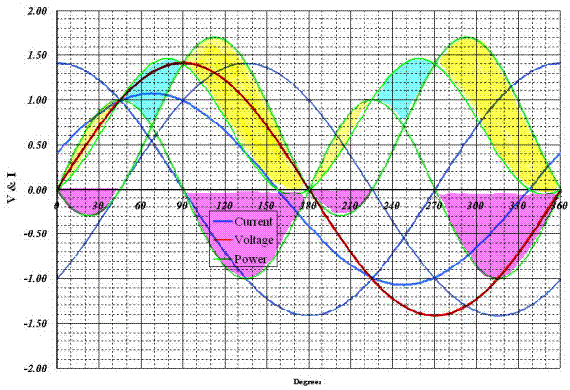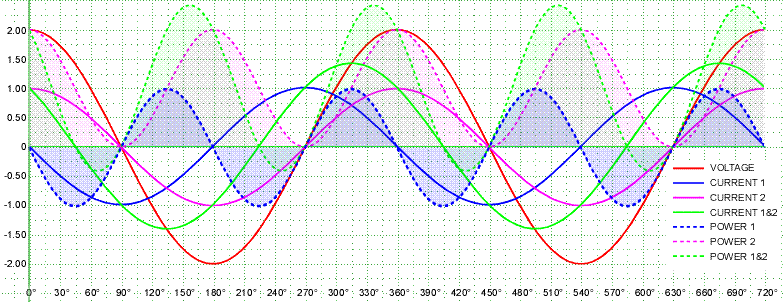There is at least one left.
Glad to hear it

Purely reactive loads(ideal) would result in a 90 degree lead/lag, preventing the appearance of real power, since instantaneous voltage would not concur with instantaneous current.
Then the values obtained from any instance with overlap would be a reflection of real power.
Is this at least partially correct?
I ask if partially correct because, during this instance with voltage at peak positive and current at peak negative, the resultant power is negative.
I have no concept of negative power, except to say it indicates to me that it is power consumed by the source.
I'm uncertain what you mean by...
Then the values obtained from any instance with overlap would be a reflection of real power.
... especially the overlap part. Perhaps where the areas under the voltage and current waveforms are concurrent? If so, no. The only readily discernable sign of real power (in the conventional, power-engineering sense

) is current other than zero when voltage is at its peak (in sinusoidal waveform analyses).
Regarding your last comment... Voltage at its positive peak while current is at its negative peak simply does not occur. That would be the current leading or lagging by 180?. Ideal reactive components' current lead or lag by 90?. When there is a combination real and reactive load, the current shift is somewhere between +90? and ?90?. However, yes, there are instances where the
vi product is negative, and thus power is negative. This can be likened to lifting a block in the air. Work was performed and the power of this occurence is the rate at which the work happened. If you then drop the block, this can be considered negative power because it is work undone, and the power would be the rate at which the work was undone.



